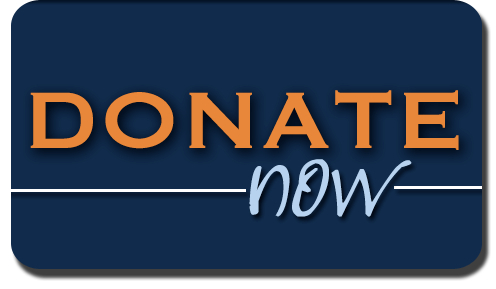By Craig Snyder*
On October 4, 2000, the United States Congress passed the Children’s Health Act (“CHA”). Soon signed into law by President Clinton, this was the most significant piece of health legislation in the entirety of the Clinton administration.
Like a cargo train pulling a large number of cars, each filled with different contents, the CHA addressed many topics, but the locomotive for the passage of the bill was its Title I, on autism.
The lead section of this piece of legislation, marked a recognition–bipartisan and from both ends of Pennsylvania Avenue–that autism had gone, already by that time, from a rare occurrence, to a national public health priority.
The bill ordered the director of the National Institutes of Health (“NIH”) to “expand, intensify, and coordinate activities of the NIH with respect to research on autism” and that research was ordered to “include investigations into the cause, diagnosis, early detection, prevention, control and treatment of autism.”
 Six years later facing surging mobilization by autism families the Congress did something it has said for many decades, regardless of which party was in power, it wouldn’t do, legislate policy on a single medical condition.
Six years later facing surging mobilization by autism families the Congress did something it has said for many decades, regardless of which party was in power, it wouldn’t do, legislate policy on a single medical condition.
The Combating Autism Act of 2006 was intended to grow and improve the federal efforts, initiated in 2000, in further response to the prevalence of autism that had been initiated in 2000.
So here we are, 16 years on from the launch of national policy on autism. And we all know the sad story. Substantial sums of money have been spent, but very little has been accomplished in terms of the goals of federal research as concisely and effectively laid out all the way back in the year 2000.
Over the last two years, SafeMinds has actively participated in the formation and leadership of a coalition of autism community groups, the Autism Policy Reform Coalition, (“APRC”) and the APRC has pursued advocacy to get the federal government to make good on the promises made in these historic pieces of legislation—to honor the commitments made to families facing autism and to all Americans who care about the costs, both material and moral, of autism in the United States.
SafeMinds did the homework and crunched the numbers and gave APRC the powerful truths that needed to be spoken about the failure of the Combating Autism Act and its successors to accomplish anything substantive for America’s autism community.
Specifically, SafeMinds looked at the research spending on autism by the NIH and quantified precisely the degree to which genetic science has been  extraordinarily overfunded–even though the rise in autism can’t be a “genetic epidemic”—and the extent to which environmental factors and triggers have been underfunded—both measurements simply based on the NIH’s own strategic plan for autism research.
extraordinarily overfunded–even though the rise in autism can’t be a “genetic epidemic”—and the extent to which environmental factors and triggers have been underfunded—both measurements simply based on the NIH’s own strategic plan for autism research.
That’s right. All we asked the government to do, as a start, was what they had already said was the scientific consensus on the relative proportions on research dollars which should go into genetic, versus environmental causation research.
All we demanded was that they follow their own plan.
For reasons any reader of SafeMinds’ materials already knows, even this common sense reform has met with pitched opposition.
But there now, finally, has been something of a breakthrough. The United States Senate Appropriations Subcommittee responsible for funding the NIH, included remarkable language in this year’s appropriations law, which provides a real opportunity for progress on finding the causes of autism and, through that, ways to both prevent new cases and to recover people and families facing the most severe, disabling, forms of autism.
Senator Roy Blunt of Missouri, who chairs the Subcommittee, included the following language:
“The Committee urges NIEHS (National Institute of Environmental Sciences) to enhance its support for research, including experimental and observational research, on potential environmental risk factors that may play a role in the initiation or promotion of ASD (autism spectrum disorders) at any life stage. Further, with respect to regressive autism, NIEHS is encouraged to focus research on the susceptibility of subpopulations to environmental risk factors and consider approaches to the mitigation of risk associated with ASD.”
This is the first step towards a paradigm shift regarding autism research policy, away from the counterproductive overemphasis on genetics and towards what the majority of parents and caregivers in the autism community believe to be the heart of the matter relating to what has happened to their loved ones.
So now there’s an opportunity for those of us dedicated to the ideas on which SafeMinds was founded, but also a challenge for us to meet.
In short order, we need to do these things:
- Raise f
 unds and grassroots support for continued advocacy on Capitol Hill, in the Executive Branch, and with the Presidential campaigns this year. Since SafeMinds is a member of the APRC, and provides support for the APRC’s government affairs activities, your financial support of SafeMinds Policy and Justice Initiative directly supports the activities described above. Please consider making your tax-deductible donation today to move us along further than ever before.
unds and grassroots support for continued advocacy on Capitol Hill, in the Executive Branch, and with the Presidential campaigns this year. Since SafeMinds is a member of the APRC, and provides support for the APRC’s government affairs activities, your financial support of SafeMinds Policy and Justice Initiative directly supports the activities described above. Please consider making your tax-deductible donation today to move us along further than ever before.
- Reach out to scientists who have been so frustrated for so long about the unwillingness of the federal bureaucracy to fund many kinds of autism research that we all know are essential to getting answers, and encourage those scientists to apply for NIEHS funding now, under the terms of the new Congressional policy direction.
Leadership of APRC told Senate staffers last year that, over the course of the present autism research strategic plan, environmental research related to autism had been underfunded by an average of $28 million per year. In this year’s NIEHS budget, the agency’s funding was increased by $26 million. Of course, we are not naïve enough to believe all of this new money will go to autism research. But we must be dogged and forceful in insisting that as much of this money goes into new causation and prevention research on autism environmental factors as is warranted by the quality of the scientific proposals we will help bring to the NIEHS for support.
Our preliminary meetings with NIEHS have been very favorable. The Institute’s director, Linda Birnbaum, and her staff take seriously the new Congressional policy guidance provided in the report language cited above.
But it is up to our community to stay vigilant, strong, and focused on answers for all those facing autism.
*Craig Snyder has been continuously engaged in autism policy advocacy since 1996.


